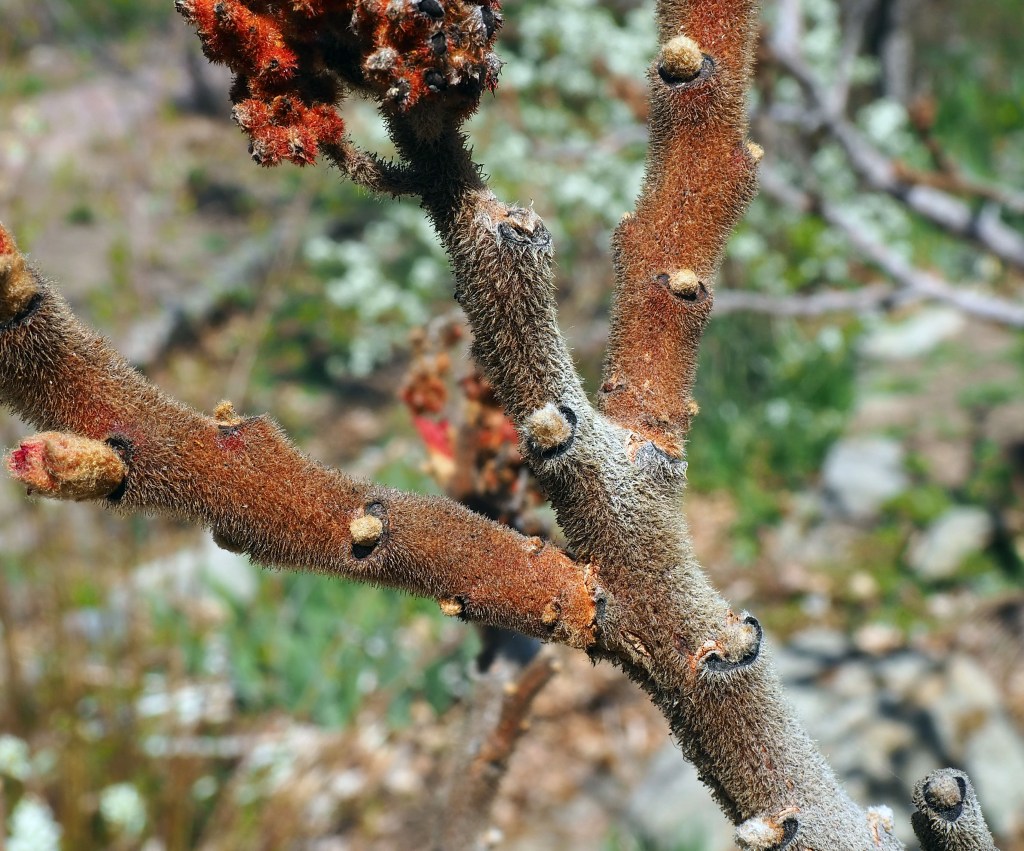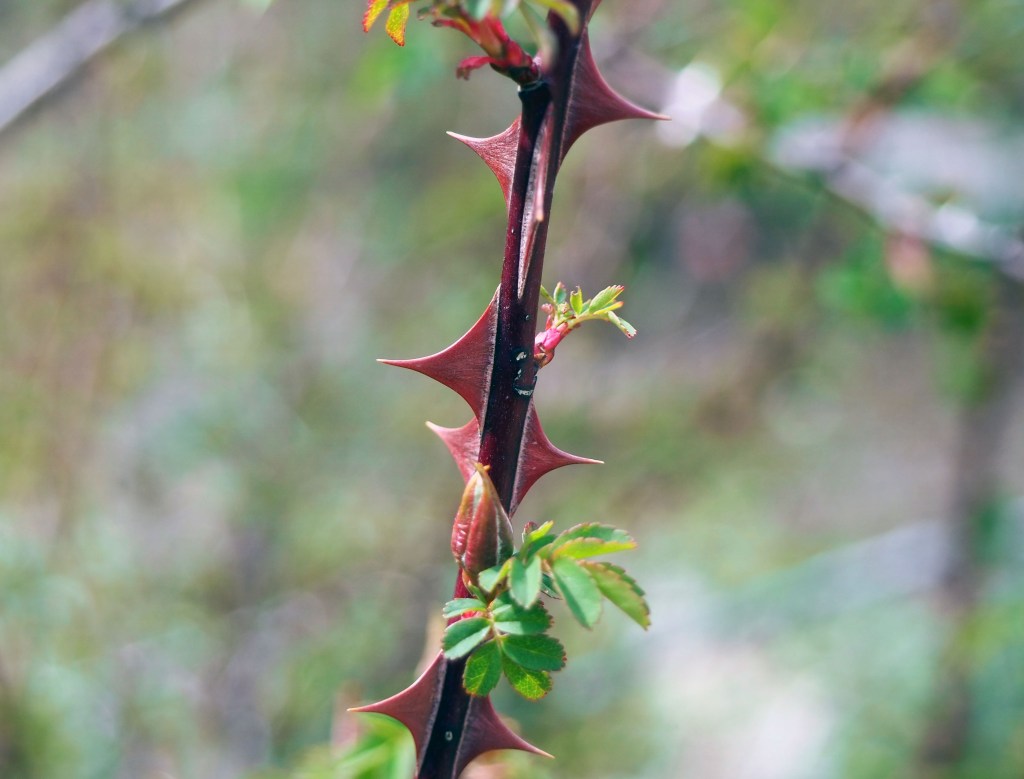Let’s start by getting something out of the way: roses have prickles, not thorns. However, just like peanuts aren’t actually nuts and tomatoes are actually fruits, our colloquial terms for things don’t always match up with botanical terminology. This doesn’t mean that we should be pedants about things and go spoiling a friendly dinner party with our “well, actually…” corrections. If you hear someone saying (or singing) something about every rose having its thorn, it’s okay to just let it go.
So why don’t roses have thorns? And what even is a prickle anyway?
Plants have a way of modifying various body parts to form a variety of features that look like something totally new and different. When the development of these features are observed at a cellular level, we find that what once may have grown into something familiar, like a stem, is now something less familiar, like a thorn. A thorn, then, is a modified stem. Stem tissue was used by the plant to form a hardened spike. Thorns help protect a plant from being eaten, so going through the trouble of producing this feature is a benefit to the plant.
Spines and prickles are similar features to thorns and serve a similar purpose, but they have different origins. Spines are modified leaf or stipule tissue (the spines on a cactus are actually modified leaves). Prickles are outgrowths of the epidermis or bark. In plants, epidermis is a single, outer layer of cells that covers all of the organs (i.e. leaves, roots, flowers, stems). Outgrowths on this layer are common and often appear as little hairs. The technical term for these hairs or hair-like structures is trichomes.

Prickles are much like trichomes, but there are usually less of them and they are hardened and pointy. They can be sharp like a thorn or spine and so are often confused for them. (Spines are also confused for thorns, as is the case with Euphorbia milii, whose common name is crown of thorns but whose “thorns” are actually spines.) As stated above, their cellular origin is different, and unlike thorns and spines, prickles don’t have vascular tissue, which is the internal tissue that transports water and nutrients throughout all parts of the plant. In general, prickles can be easily broken off, as they are often weakly attached to the epidermis.
Prickles are most commonly observed on roses and come in a variety of shapes, sizes, and colors.
Prickles on roses are commonly called thorns, and that’s okay. Thorn is perhaps a more poetic word and easier to relate to. But really, I’m torn and forlorn that they aren’t thorns. It puts me in a pickle trying to rhyme words with prickle.
Check out the linktree for various ways to follow and support Awkward Botany.





My friend had This to say about That
“Baby roses have prickles. Mother roses have thorns, haha”
Funny 🙂
Thanks, Dan! I appreciate the info, and the humor. 😉
Pingback: An Ode to Summer Air Conditioning – Semiosis
Pingback: Randomly Selected Botanical Terms: Glochids – awkward botany
Pingback: 2022: Year in Review – awkward botany
Pingback: Randomly Selected Botanical Terms: Phyllaries – awkward botany